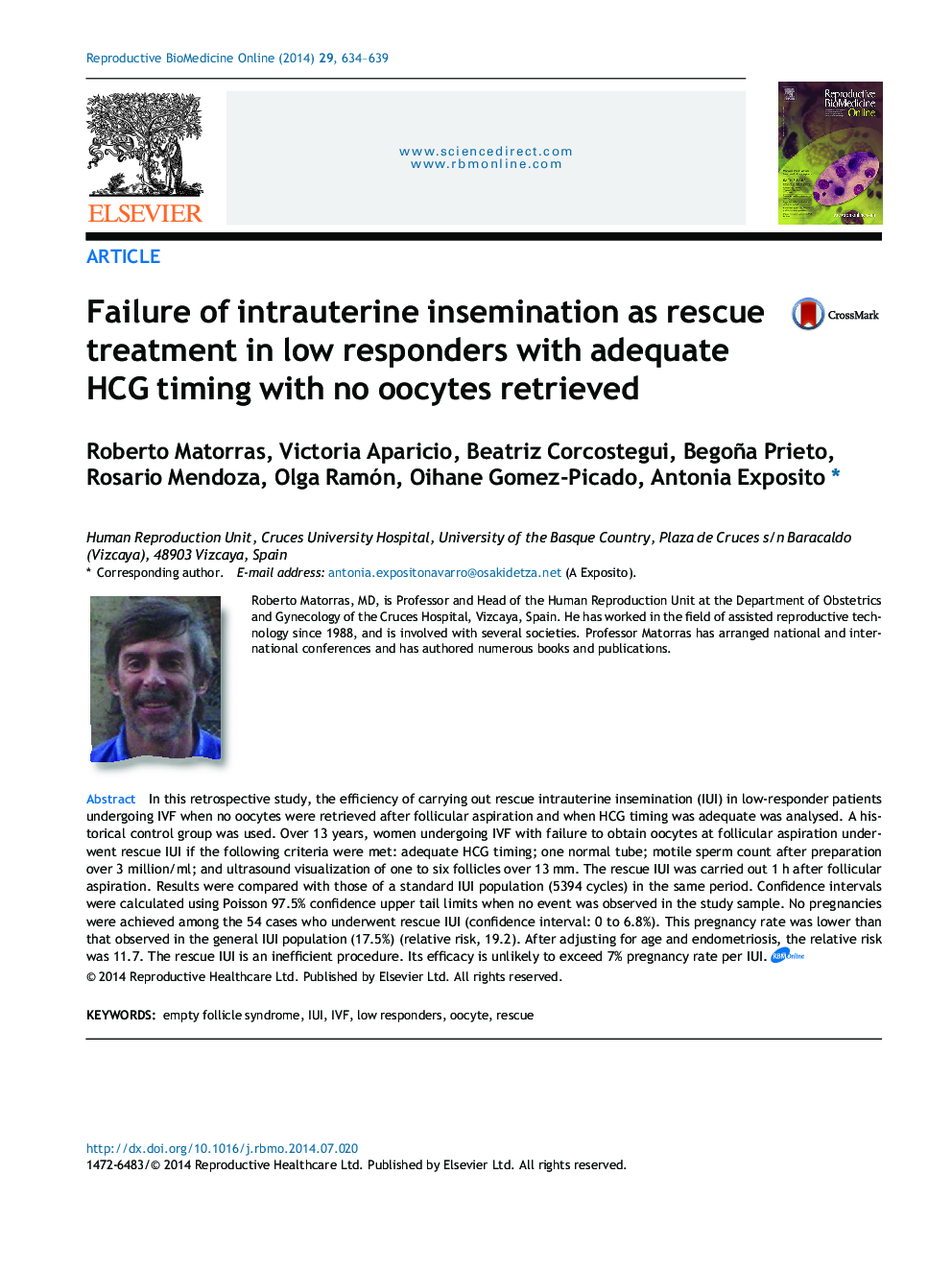| Article ID | Journal | Published Year | Pages | File Type |
|---|---|---|---|---|
| 6189014 | Reproductive BioMedicine Online | 2014 | 6 Pages |
In this retrospective study, the efficiency of carrying out rescue intrauterine insemination (IUI) in low-responder patients undergoing IVF when no oocytes were retrieved after follicular aspiration and when HCG timing was adequate was analysed. A historical control group was used. Over 13 years, women undergoing IVF with failure to obtain oocytes at follicular aspiration underwent rescue IUI if the following criteria were met: adequate HCG timing; one normal tube; motile sperm count after preparation over 3 million/ml; and ultrasound visualization of one to six follicles over 13âmm. The rescue IUI was carried out 1âh after follicular aspiration. Results were compared with those of a standard IUI population (5394 cycles) in the same period. Confidence intervals were calculated using Poisson 97.5% confidence upper tail limits when no event was observed in the study sample. No pregnancies were achieved among the 54 cases who underwent rescue IUI (confidence interval: 0 to 6.8%). This pregnancy rate was lower than that observed in the general IUI population (17.5%) (relative risk, 19.2). After adjusting for age and endometriosis, the relative risk was 11.7. The rescue IUI is an inefficient procedure. Its efficacy is unlikely to exceed 7% pregnancy rate per IUI.
